Sambar is one of the ancient tradition of preparing stews made of lentils and vegetables in south India. The broth is made with spices mixed in tamarind water. It is served with steamed rice as one of the main courses, for both formal and everyday south Indian cuisine. A two-course meal of Sambar mixed with rice and eaten with some sort of vegetable side dish followed by yoghurt is a prime southern Indian staple. If the sambar is prepared right, the meal is said to be complete ! Sambar is also served as a side dish for dosa. Another way to serve sambar is to make vada or idili and immerse those in sambar and serve.
In regions where the coconuts are in abundance, especially in Kerala, the spices will be grinded with fresh coconut to form a paste and added to the stew.
Any type of vegetables can be used to make sambar, and the sambar will be called by that vegetable’s name. Here I’ve added some most popular vegetables to make sambar. If you add potatoes to the sambar, it’ll become a complete meal and can be enjoyed along with some yogurt as side on it’s own. When adding okra and yam, saute it in a separate pan and add almost to the end of the preparation and mix. Or else the gravy will become slimy and spoil easily.
Traditionally, sambar is cooked in a very lengthy and difficult process. Here I’ve simplified the preparation for everyone’s ease.
I’m preparing the sambar in a granite stone pan, which holds heat for a long time. One peculiar aspect is you won’t get burned even if you touch the pan while cooking.
Prepaation time : 20 mts
Cooking time : 20 mts
Serves :8
Ingredients :
- 1/2 cup thoor dal ( if you want the stew to be thick add 1/4 cup more, dal once cooked will thickens in time)
- 2 cups of water ( the amount of water taken will determines the amount of broth)
- 1 carrot cubed
- 1 white radish cubed
- 150g winter melon cubed
- 2 drumsticks ( muringa),(split in the middle, cut into 2″ pieces)
- 1 red onion ( optional) cubed
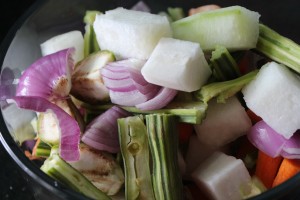
- 1/4 tsp black mustard seeds.
- 2 table spoon coconut oil
- 2 stems of curry leaves
- 2 dry whole chilli
- Sambar masala powder ( you can use the whole masala in the link. The portion of sambar masala powder is prepared for this much sambar.)
- 1 small lime size of tamarind ( or 1 table spoon of tamarind pulp)
- 1/2 cup of chopped coriander leaves
Method :
- Cook the dal first in a pressure cooker adding 1 cup of water or in a pan without adding salt. If you add salt to the dal at the beginning , it won’t cook further. To make it easier, soak the dal overnight in water.
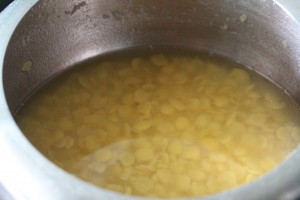 Here I’ve pressure cooked it to save time.
Here I’ve pressure cooked it to save time.- Heat a pan which can comfortably fit 4 cups of water.
- Add coconut oil or any non-flavoured oil, and splutter black mustard seeds.
- Add in the curry leaves and dry whole chilli.
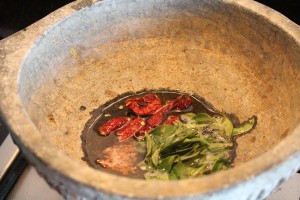
- Lower the fire and add the sambar masala powder. Stir a few times.
- Pour the remaining 1 cup of water saving few tables spoons for soaking the tamarind, along with the cubed vegetables.
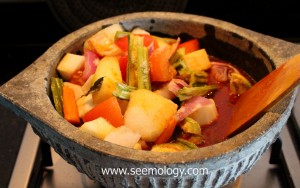
- Add salt and mix everything well and cook for 10 mts.
- When the vegetables are cooked, add in the cooked dal and mix.
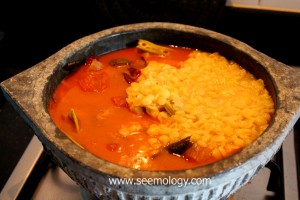
- Squeeze the tamarind and make a pulp out of it. Strain it and add it to the sambar and boil it for a few more minutes.
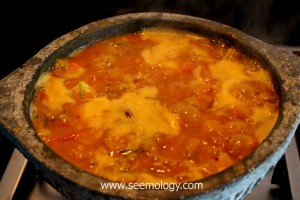
- Add the chopped coriander leaves and switch off the fire.
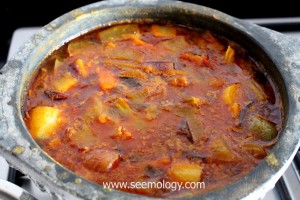
- Sambar will remain fresh for 4 hours, it will remain fresh in the fridge for a day.
- Serve with steamed rice, dosa, idilli or vada.
- ½ cup thoor dal ( if you want the stew to be thick add ¼ cup more, dal once cooked will thickens in time)
- 2 cups of water ( the amount of water taken will determines the amount of broth)
- 1 carrot cubed
- 1 white radish cubed
- 150g winter melon cubed
- 2 drumsticks ( muringa),(split in the middle, cut into 2" pieces)
- 1 red onion ( optional) cubed
- ¼ tsp black mustard seeds.
- 2 table spoon coconut oil
- 2 stems of curry leaves
- 2 dry whole chilli
- Sambar masala powder
- ( you can use the whole masala in the link. The portion of sambar masala powder is prepared for this much sambar.)
- 1 small lime size of tamarind ( or 1 table spoon of tamarind pulp)
- ½ cup of chopped coriander leaves
- Cook the dal first in a pressure cooker adding 1 cup of water or in a pan without adding salt. If you add salt to the dal at the beginning , it won't cook further. To make it easier, soak the dal overnight in water.

- Here I've pressure cooked it to save time.
- Heat a pan which can comfortably fit 4 cups of water.
- Add coconut oil or any non-flavoured oil, and splutter black mustard seeds.
- Add in the curry leaves and dry whole chilli.

- Lower the fire and add the sambar masala powder. Stir a few times.
- Pour the remaining 1 cup of water saving few tables spoons for soaking the tamarind, along with the cubed vegetables.

- Add salt and mix everything well and cook for 10 mts.
- When the vegetables are cooked, add in the cooked dal and mix.

- Squeeze the tamarind and make a pulp out of it. Strain it and add it to the sambar and boil it for a few more minutes.

- Add the chopped coriander leaves and switch off the fire.

- Sambar will remain fresh for 4 hours, it will remain fresh in the fridge for a day.
- Serve with steamed rice, dosa, idilli or vada.
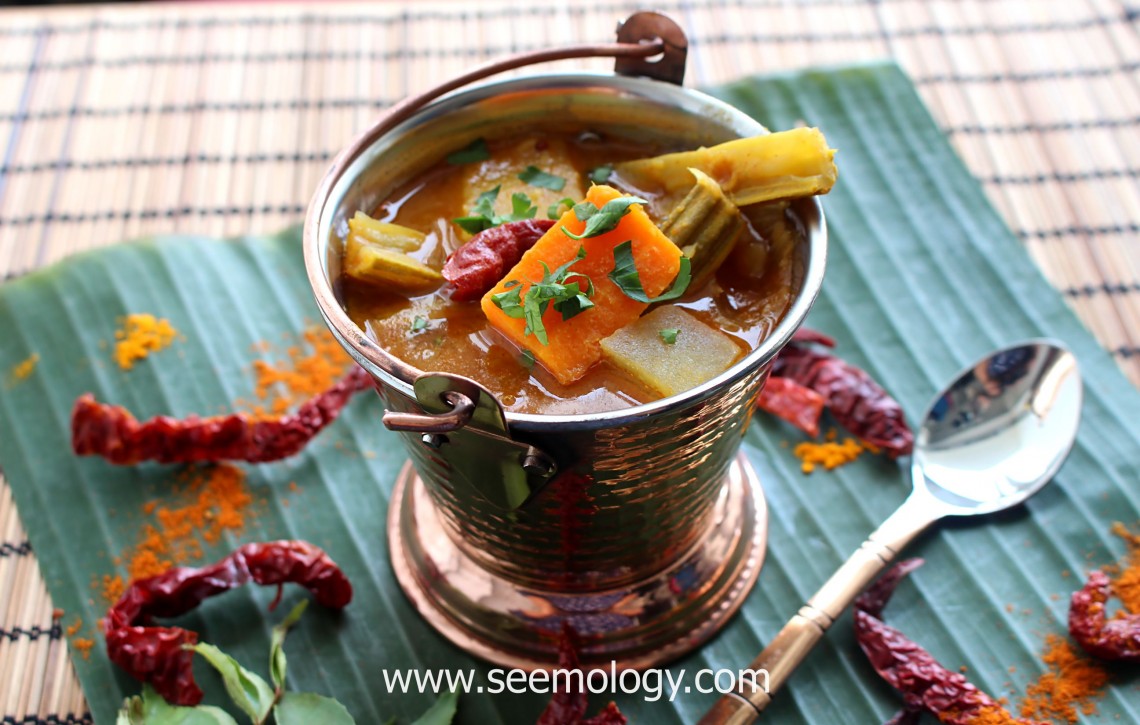
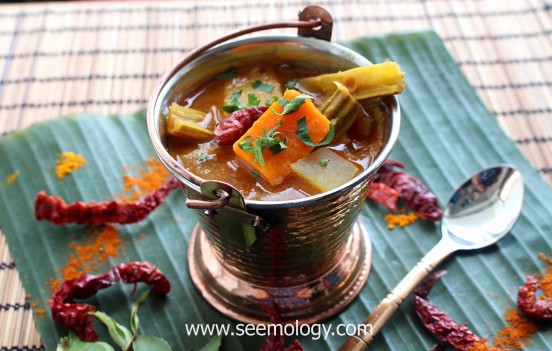
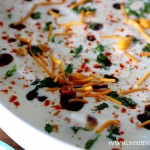

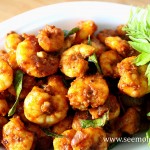


Comments by Seema Nair